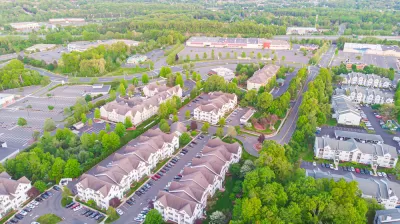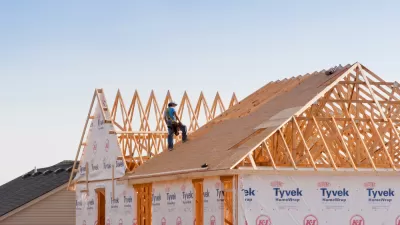A new online interactive mapping tool illustrates just how much developable land is devoted to one for of residential housing in the state of Connecticut.

Desegregate Connecticut has released a new Connecticut Zoning Atlas in collaboration with the Connecticut Data Collaborative and with the participation of 63 municipal planners across the state. First and foremost, the Atlas illustrates a lack of zoning for multi-family housing across the state.
"We think it shows how outdated zoning laws make it hard to build diverse, affordable housing," reads the introductory text of the Atlas.
An article by Michael Hamad offers insight into the findings and methodology of the new Atlas.
"Among the key findings of the map is the glaring absence of land where family housing of four or more units can be developed without a public hearing — only 2.0% of all land in Connecticut, compared with 90.6% zoned for single-family housing," writes Hamad. "Two-family housing can be developed without a public hearing on 28.1% of Connecticut land, while three-family housing is allowable on only 2.3%."
Desegregate Connecticut was founded in the summer of 2020, spearheaded by Sara Bronin, former chair of the Hartford Planning and Zoning Commission, a source of frequent news and commentary on Planetizen.

Planetizen Federal Action Tracker
A weekly monitor of how Trump’s orders and actions are impacting planners and planning in America.

Chicago’s Ghost Rails
Just beneath the surface of the modern city lie the remnants of its expansive early 20th-century streetcar system.

San Antonio and Austin are Fusing Into one Massive Megaregion
The region spanning the two central Texas cities is growing fast, posing challenges for local infrastructure and water supplies.

Since Zion's Shuttles Went Electric “The Smog is Gone”
Visitors to Zion National Park can enjoy the canyon via the nation’s first fully electric park shuttle system.

Trump Distributing DOT Safety Funds at 1/10 Rate of Biden
Funds for Safe Streets and other transportation safety and equity programs are being held up by administrative reviews and conflicts with the Trump administration’s priorities.

German Cities Subsidize Taxis for Women Amid Wave of Violence
Free or low-cost taxi rides can help women navigate cities more safely, but critics say the programs don't address the root causes of violence against women.
Urban Design for Planners 1: Software Tools
This six-course series explores essential urban design concepts using open source software and equips planners with the tools they need to participate fully in the urban design process.
Planning for Universal Design
Learn the tools for implementing Universal Design in planning regulations.
planning NEXT
Appalachian Highlands Housing Partners
Mpact (founded as Rail~Volution)
City of Camden Redevelopment Agency
City of Astoria
City of Portland
City of Laramie





























